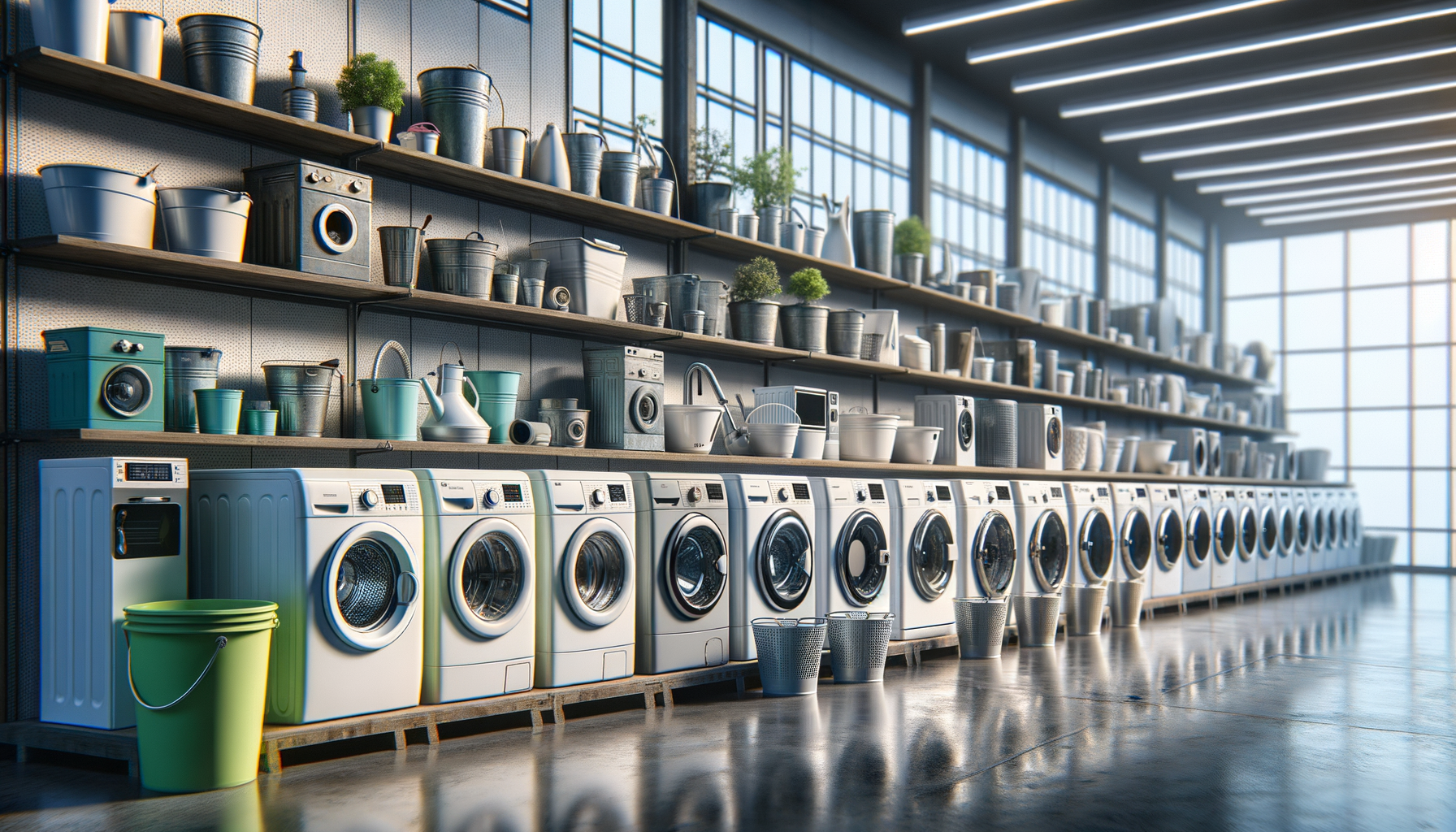The Evolution of Laundry Appliances: A Historical Perspective
Over the years, laundry appliances have undergone significant transformations, revolutionizing the way we approach the age-old chore of washing clothes. From manual hand-washing techniques to automated machines, the journey of laundry appliances is a testament to human ingenuity and the relentless pursuit of convenience. Early washing devices, dating back to the 18th century, were simple and rudimentary, often requiring significant manual effort. These devices laid the foundation for the mechanized washers that emerged in the 20th century, which introduced the concept of using electricity to automate the washing process.
The introduction of the electric washing machine in the early 1900s marked a pivotal moment in household technology. These machines gradually evolved into more sophisticated models, incorporating features like spin cycles and timers. By the mid-20th century, laundry appliances had become a staple in many households, significantly reducing the time and effort required for laundry tasks. This period also saw the introduction of the tumble dryer, further enhancing the convenience of at-home laundry.
As technology advanced, so did the capabilities of laundry appliances. The latter half of the 20th century witnessed the rise of computerized washing machines, which offered programmable settings and improved energy efficiency. This evolution has continued into the 21st century, with modern appliances boasting smart technology, connectivity, and eco-friendly features. Today, laundry appliances are not just about cleaning clothes; they are about enhancing lifestyle and sustainability.
Smart Technology: The Future of Laundry
In recent years, smart technology has made its way into laundry appliances, transforming them into intelligent devices capable of offering a highly personalized laundry experience. Smart washing machines and dryers are equipped with Wi-Fi connectivity, allowing users to control and monitor their laundry remotely through smartphone apps. This innovation provides users with the flexibility to start, pause, or stop a laundry cycle from anywhere, ensuring that laundry fits seamlessly into their busy schedules.
Moreover, smart technology in laundry appliances includes features such as automatic detergent dispensing, which optimizes the amount of detergent used based on the load size and fabric type. This not only improves cleaning efficiency but also reduces waste and environmental impact. Additionally, some smart appliances are equipped with sensors that detect fabric types and adjust washing parameters accordingly, ensuring optimal care for delicate garments.
The integration of artificial intelligence (AI) is another exciting development in the realm of laundry appliances. AI-powered machines can learn user preferences over time, automatically selecting the most suitable cycle settings for different types of laundry. This level of automation simplifies the laundry process and enhances user convenience. As smart technology continues to evolve, we can expect even more innovative features that will further revolutionize the way we do laundry.
Energy Efficiency and Sustainability
With growing awareness of environmental issues, energy efficiency and sustainability have become key considerations in the design and development of modern laundry appliances. Manufacturers are increasingly focusing on creating machines that consume less water and electricity, thereby reducing their environmental footprint. Energy-efficient washing machines and dryers are designed to use the minimum amount of resources necessary to achieve effective cleaning and drying results.
One of the significant advancements in this area is the introduction of high-efficiency (HE) washing machines. These machines use less water compared to traditional models, thanks to their advanced washing mechanisms and drum designs. HE machines are also equipped with sensors that adjust water usage based on the size of the load, further enhancing their efficiency.
In addition to water and energy savings, many modern laundry appliances are designed with recyclable materials and environmentally friendly manufacturing processes. Some manufacturers are even exploring the use of alternative energy sources, such as solar power, to further reduce the environmental impact of their products. As consumers become more eco-conscious, the demand for sustainable laundry appliances is likely to continue growing, driving further innovation in this field.
Innovative Features for Enhanced User Experience
Today’s laundry appliances are packed with innovative features designed to enhance the user experience and make laundry tasks more manageable. One of the standout features is the inclusion of steam cleaning technology, which provides a deeper clean by penetrating fabrics and eliminating wrinkles and odors. This feature is particularly beneficial for individuals with allergies, as it effectively removes allergens and bacteria from clothes.
Another noteworthy innovation is the introduction of dual-function appliances that combine washing and drying capabilities in a single unit. These all-in-one machines are ideal for small living spaces, where traditional separate units may not be feasible. They offer the convenience of completing the entire laundry process within a single machine, saving both space and time.
Many modern laundry appliances also come with customizable wash cycles and settings that cater to specific fabric types and user preferences. This level of customization ensures that clothes are washed and dried in the most appropriate manner, preserving their quality and longevity. Additionally, the use of touch-screen interfaces and voice control features makes operating these appliances more intuitive and user-friendly.
The Impact of Connectivity on Laundry Appliances
Connectivity has become a defining feature of modern laundry appliances, offering users unprecedented control and convenience. With the rise of the Internet of Things (IoT), appliances can now communicate with other smart devices in the home, creating an interconnected ecosystem that simplifies household management. For instance, smart washing machines can send notifications to users’ smartphones when a cycle is complete, allowing them to manage their time more effectively.
Furthermore, connected appliances can be integrated with virtual assistants, enabling voice-activated commands for starting or stopping laundry cycles. This feature is particularly useful for individuals with mobility challenges or those who prefer hands-free operation. The ability to receive maintenance alerts and diagnostic reports directly on a smartphone app also enhances the longevity and performance of these appliances, as users can address potential issues before they become major problems.
The future of connectivity in laundry appliances holds exciting possibilities, such as predictive maintenance, where machines can anticipate and schedule service appointments automatically. As technology continues to advance, the integration of connectivity features will likely become even more sophisticated, offering users a seamless and efficient laundry experience.








